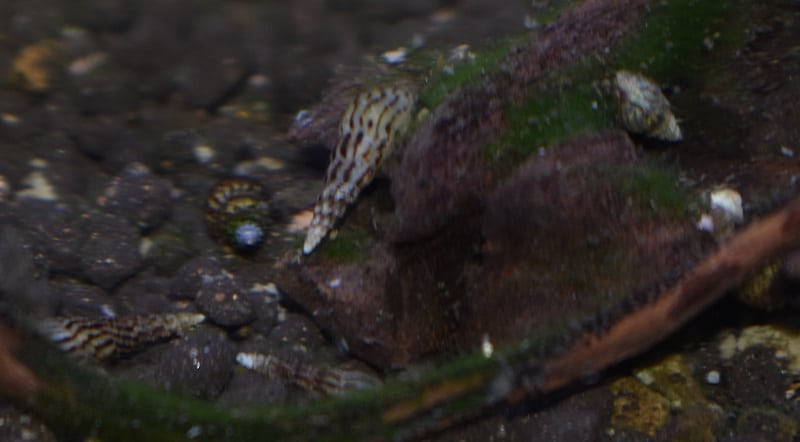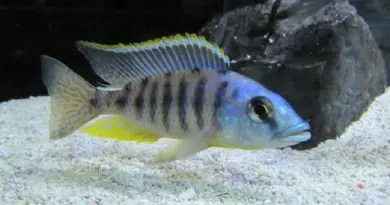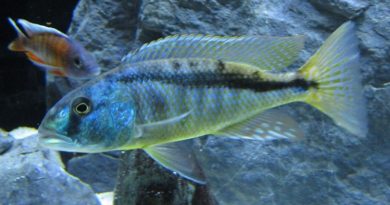How To Get Rid Of Malaysian Trumpet Snails
Malaysian trumpet snails may seem like a great idea to help maintain a sand substrate, as they are constantly digging through and turning the sand, eating leftover food particles and fish waste. However, they reproduce quickly and in great numbers and can soon overrun your African cichlid tank.
Getting rid of Malaysian Trumpet Snails is not as easy a task as it may seem. There are various methods for temporarily reducing the snail population but eradicating them completely is a different story. Often removing and replacing the substrate is the best solution.
I made the mistake of adding Malaysian Trumpet Snails to a tank previously, thinking that they would be great for keeping the sand clean and aerated. It wasn’t long before I was researching for ways to get rid of them. They were everywhere!
Why would I want to get rid of Malaysian Trumpet Snails?
You may ask. Since Malaysian Trumpet Snails are so beneficial to the substrate, why would I want to get rid of them? Initially, they started out as a great addition to the tank and if the snail population could be controlled in smaller numbers, they would be a great benefit. However, due to their fast rate of reproduction, within the space of a few months, the tank became home to hundreds of pest snails.
Firstly, there was the visual aspect of countless snails dotted all over the walls and decor of the tank. Not to mention the substrate, which was alive and had become more snails than sand.
The snails also got sucked into and began reproducing inside the filter. I was worried that they would damage the motor or block the impeller.
Another thing on my mind was that all of these snails were consuming oxygen and producing waste of their own. Oxygen consumption is the bigger concern as the waste could easily be removed with water changes.
Why are Malaysian Trumpet Snails so hard to get rid of?
Malaysian Trumpet Snails spend most of their time buried in the sand and you will not have any idea the number of snails you have in your tank and how quickly they are reproducing. By the time you realise that you have a problem, they are well established in the tank.
The shell of the Malaysian Trumpet Snail is very hard as compared with that of other snails. This protects them from predators such as loaches and other fish which would normally be used to clear pest snails.
The fact that they are livebearers that give birth to as many as 100 young at a time means that other predators such as assassin snails will not be able to keep the numbers down.
They live deep in the sand during the day where they are well protected from most predators.
These snails have the ability to close up the strong trap door entrance into the shell and most chemicals are not able to affect them. Even bleaching the tank doesn’t seem to be a solution for killing off these pests. Additionally, they can survive for long periods out of the water safe in their shell without drying out.
From what I experienced; reduced feeding seems to have little impact on the number of snails. My view on this is that my main aim is to have healthy fish, not to feed them barely enough to survive on out of fear of the pest snail population increasing.
What options do I have to get rid of Malaysian Trumpet Snails?
The first thing I tried was to control the snail population using loaches. The loaches seemed to struggle to get the snails out of the shell and ignored them after a day or two. Perhaps they were eating the young snails from the substrate but it didn’t make much impact on the number of snails in the tank.
Next thing I tried was a DIY snail trap, which was a plastic jar with holes around the sides. Inside the jar, I had some pellets in a mesh bag to attract the snails. I would leave the trap in the tank overnight and remove it the next morning along with whatever snails were in there. While this method was working, it was very slow progress.
The best option I found for getting the snail numbers under control was to root through the substrate with a net and scoop out as many as possible. This was fast and effective but it was only a temporary fix since the net would miss the young snails and the numbers started creeping up again after a few weeks.
At this point, I was sick of the snails and wanted to be rid of them completely and had decided to remove and replace the substrate. However, I did have a concern that I could miss some tiny snails and end up in the same situation even after swapping out the substrate.
I started off by removing the rocks from the tank and syphoning out all the sand. I scrubbed off the rocks as best I could. I also replaced the wool in my filter and gave the filter a light cleaning.
The aquarium was run as a bare bottom tank without any decorations for about a month, to ensure that all the snails were gone. Although no snails were visible, the bottom of the tank was vacuumed at each water change as a precaution.
After a month of running the tank as a bare bottom setup, the new sand substrate and original rocks were added. Thankfully that was the end of the issue.
Conclusion
Malaysian Trumpet Snails are a difficult pest to eradicate. In my case, a change of substrate was required.
Since then, I have done some further research into additional options of getting rid of Malaysian Trumpet Snails and No Planaria looks to be an effective product. I plan on trying out this product soon and will update the results in this article at a later date.
Thanks for reading. If you found this article helpful, don’t forget to share 🙂



